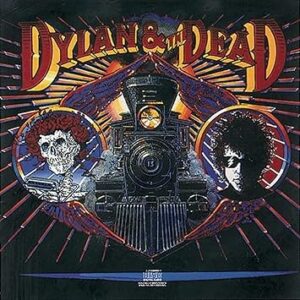 When a museum welcomes an object or collection, values rise for objects with similar provenance. A reader’s Bob Dylan collectible vinyl album serves as a great example of this phenomena, albeit on a celebrity scale.
When a museum welcomes an object or collection, values rise for objects with similar provenance. A reader’s Bob Dylan collectible vinyl album serves as a great example of this phenomena, albeit on a celebrity scale.
A museum dedicated to the life and works of Bob Dylan opened in Tulsa Oklahoma. A new book, Mixing Up the Medicine, shares never before seen photos and artifacts from seven decades of Dylan’s career. Some of the amazing photos from the Tulsa Museum Collection include a 1957 photo of “Bobby Zimmerman” singing his first show at summer camp in Wisconsin, a 1964 Dylan meeting with Johnny Cash, a photo of Dylan and Allen Ginsberg at Jack Kerouac’s grave, a Rolling Thunder photo of 1975, a 1987 photo of Dylan and George Harrison, and The Blood on the Track 1993 tour photo, and an intimate “card game” shot from the 1988 Never Ending Tour. Dylan continues to tour today.
Our reader’s object is the famous Dylan and the Dead LP, first released February 6 1989, a collaboration between the Grateful Dead and Dylan, a compilation from the 1987 stadium tour. Critics at the time said, “What? Folk rock meets psychedelic rock? Dylan won’t wear tie dye.” The album contains seven songs by Dylan, accompanied by the Dead, produced by Jerry Garcia and John Cutler.
Side one: “Slow Train,” “I Want You,” “Gotta Serve Somebody,” “Queen Jane Approximately”
Side Two: “Joey,” “All Along the Watchtower,” “Knockin on Heaven’s Door”
The album, originally panned in 1989, soon reached Gold certification, Billboard’s No 37th in the US and 38th in the UK. When an album reaches Gold it means MANY are in circulation. Usually a top seller won’t become a rare album today. But the new museum influences value.
What’s this Bob Dylan Album worth?
Our reader says it’s in near mint condition, pressed in 1989 at Columbia Records in Carrollton GA. The sleeve condition remains in near mint, still in poly shrink but with a broken seal, played once. How can he tell? The original inner picture sleeve remains, and the HYPE sticker which reads: “The Legendary Meeting.” If this is all true, the album is worth $300. If one factor is NOT true, the value hovers between $20 and $50.
A client in Paradise CA, before the fire, owned a harmonica rumored that Bob Dylan played at a certain venue. For this valuation I consulted harmonica virtuosi Joe Powers. He said the apocryphal story increases the (perceived) value to from $50 to $250.
Question of Provenance
Who purchased the album, and WHY, adds to value. A stunning example of Tulsa’s Dylan Museum influencing the value of an object. Art Net News reported Dylan’s sprawling Scottish Highlands Mansion on the market as of August 2023. This estate was built in the Edwardian Era, Aultmore, in the village of Nethy Bridge in Cairngorm National Park, a very remote area. It sprawls 18,357 square feet with sixteen bedrooms and eleven baths on twenty-five acres of gardens with statues, gazebos, and three cottages. If you know Scotland, you know this is RARE. Dylan and his brother David Zimmerman bought the estate in 2006 and offered it in 2023 for $3.9 M. Why Scotland? Dylan apparently loved Scottish folk music and poetry.
Critics reviewing the Dylan and the Dead album in 1989 believed Dylan wandered from his folk roots, but Dylan never strayed far from those roots. The website “Untold Dylan” reports Dylan followed poems and songs of Hamish Henderson, the founding father of Scotland’s twentieth-century folk renaissance. For example, his “The 51st Highland Division’s Farewell to Sicily” contains a line “the times are a-changing.” A 2008 Guardian article titled “Robert Burns is My Biggest Inspiration” reported that the 18th C ‘Bard of Ayrshire’ wrote a famous poem that reverberated for Dylan: “My Love is Like a Red Red Rose/ that’s newly sprung in June/ O my love’s like the melodie that’s sweetly played in tune.” The Center for Burns Study at the University of Glasgow reported to the Glasgow Herold that “‘Rabbie’ Burns (like Bob Dylan) was a hugely committed artist who dealt with everyday emotions: we are not surprised (Burns) influenced Dylan” and not surprised Dylan owned a Scottish Mansion.
A museum with this great artist’s name increased the value of all things Dylan.